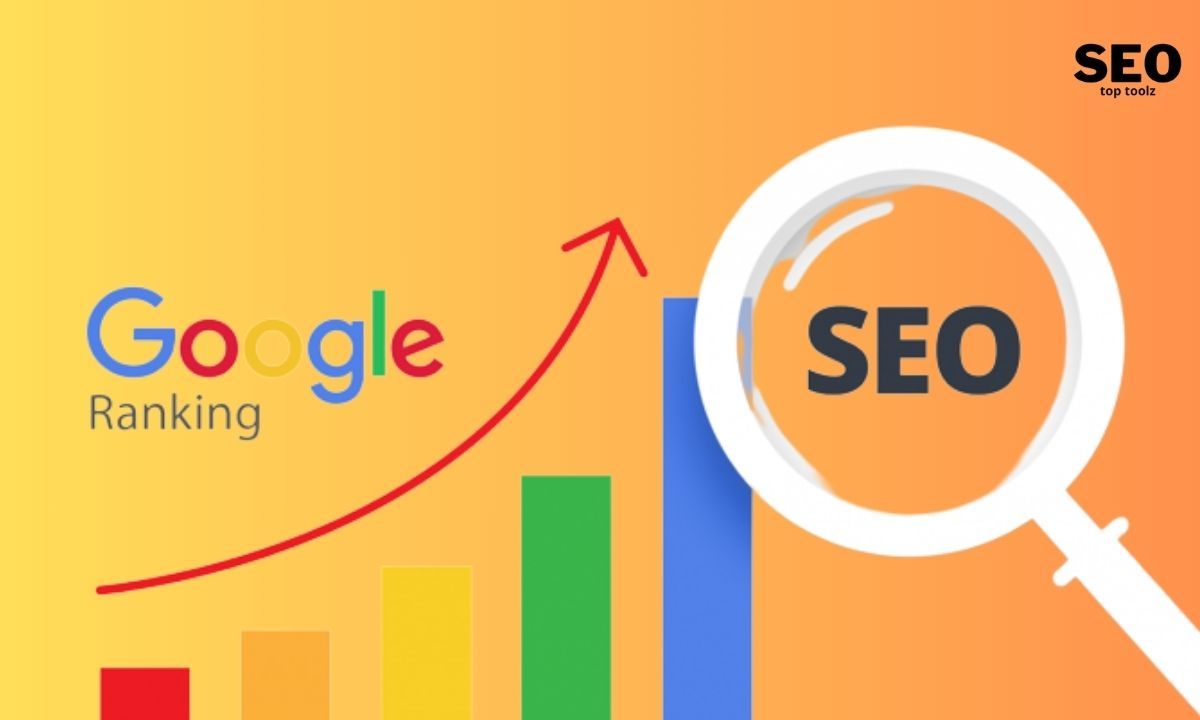How to Rank Higher on Google: 17 Strategies

In the ever-evolving landscape of digital marketing, securing top rankings on Google is the Holy Grail. Everyone from seasoned SEO experts to newcomers in the field aspires to reach the pinnacle of search engine success.
If you’ve ever found yourself expressing the sentiment, “I’d prefer not to be overly concerned with our Google ranking,” you certainly belong to the less common perspective.
Within this all-encompassing manual, we shall embark on an extensive exploration of the methodologies and maneuvers imperative for attaining premium Google standings in the year 2023.
Now, let’s embark on a comprehensive exploration of each of these stratagems.
Targeting Reasonable Keywords
Keyword research is the foundation of SEO success. To rank higher on Google, you must begin by identifying and targeting reasonable keywords. These are terms that align with your content and resonate with your target audience. Consider keyword volume, competition, domain authority, and relevance when selecting your keywords. Start with low-volume, low-competition keywords if you’re just beginning your SEO journey.
Understanding Keyword Intent
Understanding the intent behind keywords is crucial. Google users search with various intentions, such as informational, commercial, transactional, and navigational. For SEO purposes, focus primarily on informational intent keywords. Dive deeper to determine the specific information users seek when entering these keywords. Targeting the right intent ensures your content aligns with user expectations.
Crafting In-Depth Long-Form Content
High-ranking content on Google is synonymous with in-depth, long-form articles. Whether it’s blog posts or landing pages, prioritize creating comprehensive content that covers your target keyword thoroughly. Google favors content depth. Avoid thin and shallow articles, and go straight for content that provides substantial value.
Mastering On-Page SEO
On-page SEO is your bread and butter for Google rankings. Key elements include strategically placing your target keyword in meta titles, meta descriptions, H2 headings, image file names, image alt text, URLs, and naturally within your content. Incorporate internal and external links judiciously. Optimize meta descriptions by keeping them between 155-165 characters, highlighting the value of your content.
Unlocking the Power of Long-Tail Keywords
Long-tail keywords are your secret weapon. They often strike a balance between volume and competition. Additionally, long-tail question keywords offer opportunities to outperform top results through the “People Also Ask” section. These keywords can provide a competitive edge, driving more targeted traffic to your content.
Creating Skimmable Content
Google is increasingly prioritizing content that offers immediate answers. To rank higher, make your content skimmable. Use clear and specific headings (<h2> and <h3> tags) that allow readers to quickly extract information. Utilize lists, bullets, boldface, and headings liberally to enhance skimmability.
Using Explicit Statements
For question keywords, include explicit statements that provide clear answers while restating the question. This helps Google understand your content’s relevance to the query. Ensure that your content aligns precisely with the user’s search intent.
Harnessing the Visual Element
Visual content enhances rankings in multiple ways. It keeps visitors engaged, aligns with Google’s evolving visual results, and can boost your presence in image search results. However, avoid generic images. Instead, use visuals that illustrate concepts, add value, and align with keyword intent.
Implementing Table of Contents
Incorporating a table of contents into your content represents a straightforward yet potent tactic. Google frequently incorporates these navigational links in search results, enhancing the user-friendliness of your content. Utilize HTML tags to create anchor points for each section and link them at the beginning of your content.
Optimizing Meta Titles
Craft SEO titles (meta titles) with precision. Keep them under 60 characters, front-load your target keyword, and consider popular modifiers like the current year. While you can get creative with your on-page titles (H1), prioritize clarity and relevance in your SEO titles.
Earning Quality Backlinks
Backlinks remain a potent ranking factor. While creating quality content and social promotion can naturally generate backlinks, proactive link-building efforts can further enhance your authority. Seek backlinks from reputable sources within your niche.
Mining Search Queries
Leverage Google Search Console to uncover queries leading users to your content. Identify additional headings and keywords to optimize existing pages or create new content. Ranking for queries you already receive impressions for can be a powerful strategy.
Leveraging Video Content
Video content is gaining prominence in Google’s SERPs. Consider creating video content, especially for tutorial and how-to keywords. Videos often secure top positions in search results, offering an opportunity to dominate organic rankings.
Revisiting Pages Already Ranking
Sometimes, it’s easier to improve the ranking of an existing page than to create a new one from scratch. Analyze your site’s organic keyword rankings and focus on optimizing pages already in the top 10 results. These improvements can lead to significant traffic gains.
Conducting a SERP Analysis
For highly competitive keywords, conduct a SERP analysis to assess the requirements and feasibility of ranking at the top. Understand your competitors’ backlink profiles, content depth, and domain authority. This insight will inform your strategy.
Adding Schema Markup
While not a direct ranking factor, schema markup enhances your visibility in search results. It provides structured data to Google, enabling rich results like articles, breadcrumbs, FAQs, and more. Choose relevant schema types to make your content more clickable.
Checking Technical SEO
Technical SEO plays a critical role in your overall SEO health. Pay attention to site-level and page-level optimizations. Ensure images are properly compressed and sized, and resolve any indexation issues. Monitor Core Web Vitals, mobile usability, and conduct manual mobile tests to guarantee a seamless user experience.
Conclusion
In summary, the realm of SEO undergoes perpetual evolution. To dominate Google rankings in 2023, you must combine meticulous keyword research, content depth, on-page optimization, and a strategic approach to backlinks. Understanding user intent, creating skimmable content, and embracing visual elements are essential. Don’t forget to leverage video content, conduct SERP analysis, implement schema markup, and maintain impeccable technical SEO.
By following these 17 strategies, you can position yourself to not only rank higher on Google but also maintain and improve your search engine visibility. Remember, Google rewards quality, relevance, and user satisfaction. Stay updated with the latest SEO trends, adapt your strategy, and watch your rankings soar in 2023.




